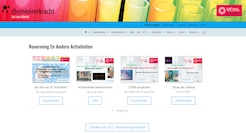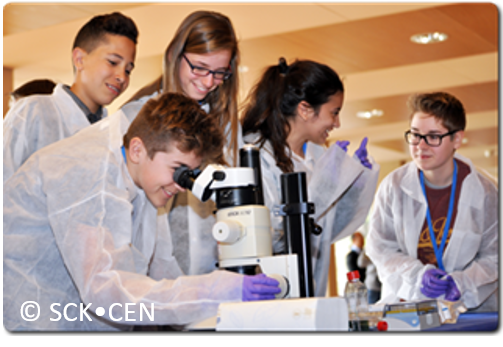Development and Optimization of Photochemical Reactors for Productivity and Efficiency

3001 Leuven, België
Promovendus/a: Glen Meir
Promotor(en): Prof. dr. ir. Thomas Van Gerven, Prof. dr. ir. Simon Kuhn, Prof. dr. Mumin Enis Leblebici
Continuous photochemical reactors with conventional illumination are typically designed as a tube illuminated from the side, or so called cross-current illumination. These reactors suffer from energy efficiency problems as most of the incident light is lost to the surroundings and not used in the reactor. This problem was tackled in this PhD by the introduction of a novel way of illuminating the reactor. This novel technique consists of moving the light source from a “side” position to a position “in line” with the liquid flow in the reactor. This technique is so called co-axial illumination of photochemical reactors, and can be split up in co-current illumination (with the flow of reagents) and counter-current illumination (against the flow of reagents). The use of both novel illumination techniques requires a full redesign of the current photochemical reactor. This design was tailored towards single (liquid) and two-phase (gas-liquid) reactors. Alongside the design, a mathematical model was developed for both photochemical and photosensitized reactions to design the reactor in terms of geometry and operating conditions. The model includes the used light sources, the applied flow rate, concentration and enables the user to calculate the conversion, operating efficiency regarding energy efficiency and maximal productivity which is an important benchmark for industry. The models were evaluated in both for single- and two-phase reactions in 2 different reactor designs tailored to the specific operation. The model and experimental data showed a good match and enable the design of future reactors and optimization of current reactors. In conclusion, the model indicated optimal operating conditions in the following situation: illuminate the reactor with a photon to reagent ratio of 1 times the quantum yield of the reaction, use a reagent absorbance value which is at least 1.75 along the length of the reactor. When using a sensitizer, make sure to use one which is sufficiently stable or use sufficient such that degradation is minimal, and use a concentration of reagent which is sufficiently high to enable the reaction to operate at an energy efficient point. These model results were experimentally verified. Via the use of this novel illumination technique, we were able to save up to 6 times the energy, and use up to 100 times less compared to the state of the art.
All Dates
- 2022-12-05 17:00
Powered by iCagenda





